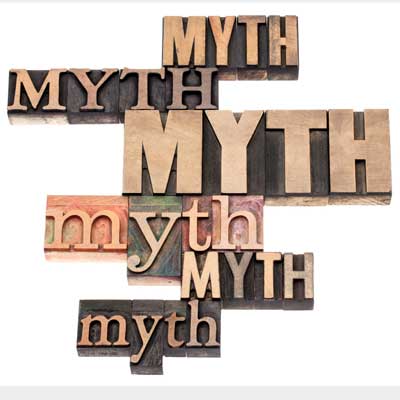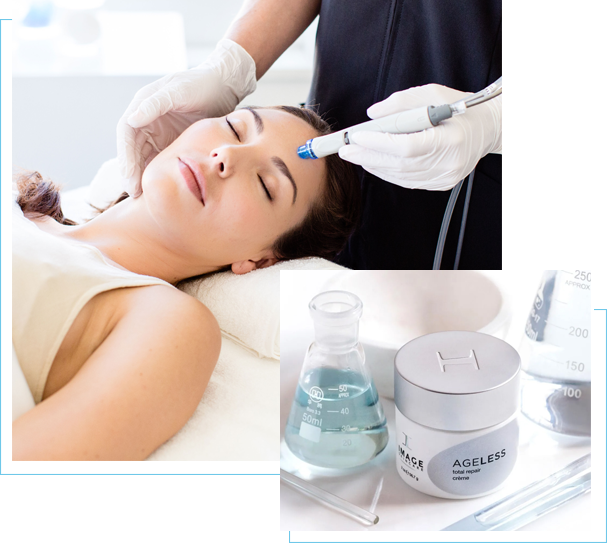
Skin Cancer Myths Every Seattleite Needs to Know
Every week I diagnose and treat a large number of skin cancers in my patients. Skin cancer is by far the most common cancer there is. There are 5-6 million cases per year in the United States, making it a disease that will affect many people at some point in their life. Dispelling a few common skin cancer myths may help you avoid getting one of these skin cancers.
Skin Cancer Myth or Fact #1:
I won’t get skin cancer because there isn’t any sun in Seattle.
False. Brief sun exposures throughout the year add up to significant damage for people with fair skin. This could be from driving with the top down or just walking around during peak sun hours from 10 am to 4pm. These small, everyday exposures are linked to squamous cell cancer. Even though squamous cell carcinoma is not as dangerous as melanoma, it is far more common and causes about 20% of skin cancer deaths.
Intense, intermittent exposure to sunlight has been linked to increased melanoma risk. What is intense, intermittent sun exposure? It’s those days when EVERYONE is outside because the weather is so fantastic. In other words: August and September in Seattle.
Skin Cancer Myth or Fact #2:
Tanning beds are safer than ultraviolet rays from the sun.
False. Tanning beds have been unequivocally linked to melanoma and efforts are underway around the world to more tightly regulate them. In essence, tanning beds are devices built to deliver high doses of ultraviolet radiation. They are quite good at this since about 20 minutes in a tanning bed is equal to about 4 hours in the sun. There are many types of tanning beds, but all of them are more carcinogenic than sunlight.
FYI: In addition to increased skin cancer, tanning beds cause wrinkles, sun spots, and freckles. There are also occasional outbreaks of viral infections such as warts or molluscum from tanning beds.
Skin Cancer Myth or Fact #3:
I won’t get skin cancer because I tan easily and rarely burn.
False. There is no such thing as a healthy suntan. The trigger for a suntan is genetic damage (mutation) to the cells in your skin from ultraviolet radiation. Once skin is exposed to UV radiation, it increases the production of pigment to try to protect the skin from further damage. People who tan easily do have a better defense against the next round of sun damage, but the stimulus for that protective response is still genetic damage. In addition, researchers have found that it takes about a month to repair all this genetic damage and that during that month you are especially sensitive to DNA damage in the skin.
This is also the reason why the base tan does not work. While the tan does offer some protection, the skin still needs about a month to recover from the genetic damage and any additional sun exposure during that time is just adding to the damage.
Skin Cancer Myth or Fact #4:
If you have a funny looking mole, you can always have it cut out before it becomes cancerous.
False. The primary concern with funny-looking moles is that they may already be a potentially deadly melanoma. With early detection, melanoma is curable. So the real answer is that I hope that patients bring me their funny looking moles early enough that I can cure them completely if they are actually melanoma.
Unfortunately, melanoma can spread very quickly, in which case they cannot be cured easily with surgery. Although there are many new treatments for melanoma, once it has spread, the prognosis is just plain bad.
The bottom line is that a delay in finding a melanoma may allow a likely curable tumor to become one that will be fatal. This is why it is critical to see a dermatologist if you notice a suspicious mole or have an annoying sore that won’t heal. If you are at risk of skin cancer, an annual skin cancer screening can be very helpful in identifying cancer in its early stages.
Skin Cancer Myth or Fact #5:
You don’t need sunscreen on all these cloudy days in Seattle.
False. Clouds do filter out some ultraviolet light, but far from all of it. The U.S. National Weather Service and Environmental Protection Agency, estimate scattered clouds block about 10%, broken clouds about 25%, and a completely overcast sky blocks about 70%. However, there is also a phenomenon called UV enhancement where some types of partly cloudy skies actually increase the UV energy by reflecting and focusing it leading to 25% MORE ultraviolet light than on a clear day.
Around here, what often happens is that the cloudy skies make it cool so we cover up. No real need for sunscreen on our body if we are wearing long sleeves. But, have you EVER put on sunscreen on a cloudy day? You really do want to have sunscreen on your face during all those partly cloudy days, especially in the summer.
Skin Cancer Myth or Fact #6:
SPF 30 is all you need – anything higher is a waste.
False. False. False.
- An anti-cancer and anti-aging effect isn’t even seen until you get to SPF 30. Anything LESS than SPF 30 is definitely a waste of time (and money).
- The SPF rating is based on applying 1 oz. for your body and 1 tablespoon for your face. If you are like the 90% of people who don’t use that much, your actual SPF is much lower than whatever is on the label. Most people use about half of what you need, so to get the measured benefits of SPF 30, you probably need to use SPF 60 to compensate for your under-usage.
Go big or go home. It all costs about the same anyway. I seldom bother with anything less than 50.
Skin Cancer Myth or Fact #7:
Only old people get skin cancer so kids and teenagers don’t need to worry.
False. Melanoma is the most common form of cancer in young adults from 25-29. It is also increasing rapidly in women 15-29. Protecting yourself from the sun is the only thing you can do to protect yourself and it is every bit as critical for young people as it is for older adults.
Skin Cancer Myth or Fact #8:
I ski, snowboard and am outside a lot, but I don’t need to wear sunscreen because it’s winter.
False. While it is true that the sun’s intensity is lower during the winter, snow reflects the damaging rays of the sun, which can increase your chance of sunburn or damage to your skin. In addition, there is much more ultraviolet radiation at high altitude so you also need to compensate for that.
Skin Cancer Myth or Fact #9:
The Vitamin D that I’ll get from the sun will protect me from getting other cancers.
False. In some studies an association between Vitamin D levels and breast, colon, and other cancers has been seen, but no studies have been able to prove an association. What we do know for sure is:
- Sun exposure causes the majority of skin cancers.
- The safest, most reliable way to get Vitamin D is from nutrition.
If you want to have your cake and eat it too, wear sunscreen when you are outside to avoid skin cancer and take 2000 IU of Vitamin D daily if you believe that it helps prevent other cancers. Total cost of anticancer regimen? Less than $20/month. Value of not getting cancer? Really, REALLY big.
What can I do to protect myself from skin cancer?
1. Reduce your risk with good sun protection habits
The bottom line is you should find a sunscreen you like and then make sure it is nearby when you are in the sun. This means that if you have a baby stroller, you should keep sunscreen in it. If you have a boat, keep sunscreen in the boat. If you have a golf bag, that golf bag should have a bottle of sunscreen. Since about half of skin cancers occur on the face, it is worth your while to find a daily product (lotion, aftershave, or makeup) that has sunscreen in it and use it every day, all year round, even in Seattle. Doing this will decrease the chances of having to have surgery to remove a skin cancer on your face. No one wants that.
2. Check your own skin for new or funny looking spots
Skin cancers can vary in appearance. Regularly checking your skin can alert you to the development of a cancerous condition. Look for:
- Skin growths that change in size and color and appear to be translucent, tan, brown, black, blue, red, or multicolored.
- Any mole, birthmark or beauty mark that changes in color, size, texture or outline.
- Any spot that continues to itch, hurt, crust, scab, erode or bleed.
- Any open sore or wound on the skin that does not heal, lasts for more than one month or heals and then reopens on a regular or irregular basis.
If you have any of these symptoms, or if there is any doubt in your mind, you should make an appointment for a checkup soon.
3. See a dermatologist for skin cancer screening
A skin cancer screening examination, also known as a full body skin examination or a “skin check” takes less than 10 minutes to do, is completely painless, and can save your life. People who should be screened include:
- People with light colored features, especially blond or red-haired people, those with green or blue eyes, and people with freckles
- People who burn very easily
- Anyone with a relative who has had melanoma
Some people should not only be screened, but should actually be seen every year including:
- Anyone with a history of any kind of skin cancer
- Anyone with a family history of melanoma AND who has > 50 moles
- Anyone with > 100 moles
- Anyone with a large number of atypical or “funny-looking” moles
- Anyone who has had an organ transplant
At Miller Family Dermatology we provide comprehensive skin cancer diagnosis and treatment. Although we see hundreds of skin cancer patients per month, treatments are individualized to provide the best care for each patient we see. Skin cancer care starts with being screened. Call us today at 425-654-1275 or Request an Appointment Online.


